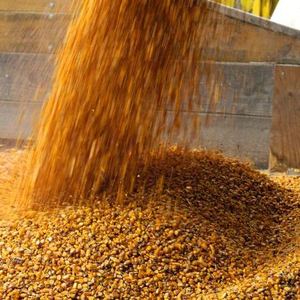Corn use for fuel ethanol at 401 million bushels in September

November 24, 2020
BY Erin Krueger
The USDA recently released its Grain Crushings and Co-Products Production report for November, reporting that corn use for fuel ethanol was at 401 million bushels in September, down from both the previous month and September 2019.
Total corn consumed for alcohol and other uses was at 450 million bushels in September, down 3 percent from August and down 1 percent from the same month of last year. September usage included 91.4 percent for alcohol and 8.6 percent for other purposes.
Corn consumed for fuel alcohol was at 401 million bushels, down 2 percent from August and down 1 percent from September 2019. Corn consumed in September for dry milling fuel production and wet milling fuel production was 90 percent and 10 percent, respectively.
Advertisement
Advertisement
Sorghum consumed for fuel alcohol production in September was withheld to avoid disclosing data for individual operations. The data was also withheld the previous month. In September 2019, however, 5.127 million hundredweight (cwt) (287,112 tons) of sorghum was used to produce fuel ethanol.
At dry mills, condensed distillers solubles production fell to 77,294 tons in September, down from 81,214 tons the previous month and down from 102,911 tons during the same month of 2019. Corn oil production fell to 140,468 tons, down from 146,009 tons in August and 142,861 tons in September 2019. Distillers dried grains production was at 341,156 tons, down from 342,654 tons in August, but up from 286,849 tons in September of the previous year. Distillers dried grains with solubles production fell to 1.73 million tons, down from 1.81 million tons in August and 1.79 million tons in September 2019. Distillers wet grains production was at 961.695 tons, up from 926,812 tons the previous month, but down from 1.22 million tons during the same month of last year. Modified distillers wet grains production increased to 402,384 tons, up from 373,476 tons in August and 398,844 tons in September 2019.
Advertisement
Advertisement
At wet mills, corn germ meal production fell to 50,401 tons, down from 53,576 tons in August and down from 64,059 tons in September 2019. Corn gluten feed production was at 284,409 tons, up from 260,453 tons the previous month, but down from 289,797 tons during the same month of last year. Corn gluten meal production fell to 85,348 tons, down from 86,406 tons in August and 86,423 tons in September 2019. Wet corn gluten feed production was at 251,199 tons, down from 252,006 tons in August, but up from 208,645 tons during the same month of the previous year.
At wet and dry mills, carbon dioxide captured fell to 185,854 tons in September, down from 194,460 tons the previous month and 253,981 tons in September 2019.
Related Stories
The USDA maintained its outlook for 2025-’26 soybean oil use in biofuel production in its latest World Agricultural Supply and Demand Estimates report, released Aug. 12. The forecast for soybean oil prices was also unchanged.
U.S. soybean production for 2025 is forecast at 4.29 billion bushels, down 2% when compared to last year, according to the USDA National Agricultural Statistics Service’s latest monthly Crop Production report, released Aug. 12.
Marathon Petroleum Corp. on Aug. 5 released second quarter financial results, reporting improved EBITDA for its renewable diesel segment. The company primarily attributed the improvement to increased utilization and higher margins.
Chevron Corp. on Aug. 1 confirmed the company started production at the Geismar renewable diesel plant in Louisiana during the second quarter after completing work to expand plant capacity from 7,000 to 22,000 barrels per day.
California’s new specified source feedstock attestation requirement: A critical new compliance step for renewable fuel producers
As of July 2025, California’s SCFS requires renewable fuel producers using specified source feedstocks to secure attestation letters reaching back to the point of origin. This marks a significant shift in compliance expectations.
Upcoming Events










